
漢德百科全書 | 汉德百科全书
 History
History


 Architecture
Architecture
 Eurovision Song Contest,ESC
Eurovision Song Contest,ESC
 FIFA Fussball-Weltmeisterschaft 1998
FIFA Fussball-Weltmeisterschaft 1998

 Financial
Financial
 ***Global Financial Center
***Global Financial Center
 France
France
 UEFA European Championship 2016
UEFA European Championship 2016
 Women's Soccer World Cup 2019
Women's Soccer World Cup 2019

 History
History
 N 2000 - 2100 AD
N 2000 - 2100 AD

 Ile-de-France
Ile-de-France

 International cities
International cities
 *European Capital of Culture
*European Capital of Culture

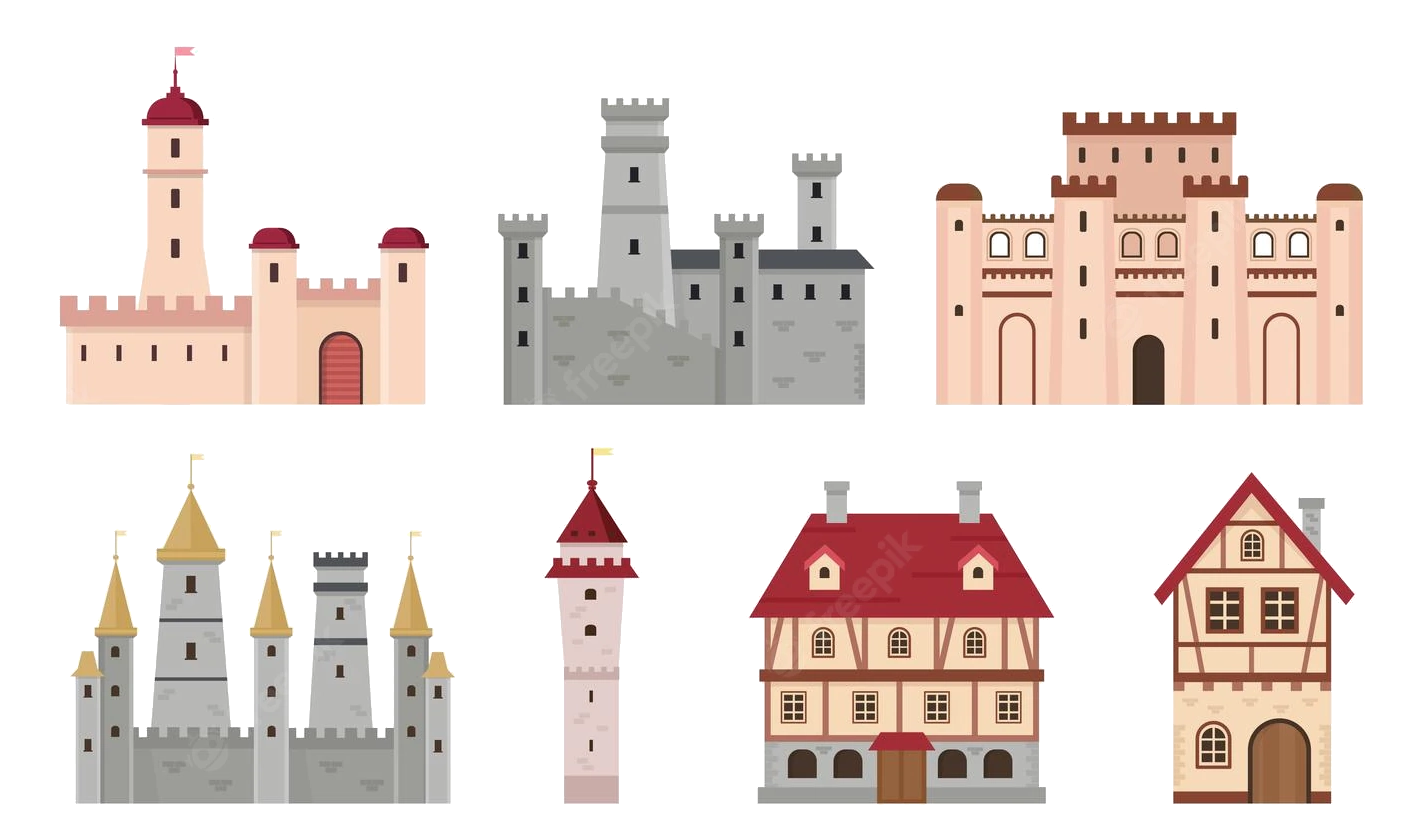 Medieval cities in Europe
Medieval cities in Europe
 Olympic Summer Games
Olympic Summer Games

 2024 Summer Olympics
2024 Summer Olympics
 Seine
Seine

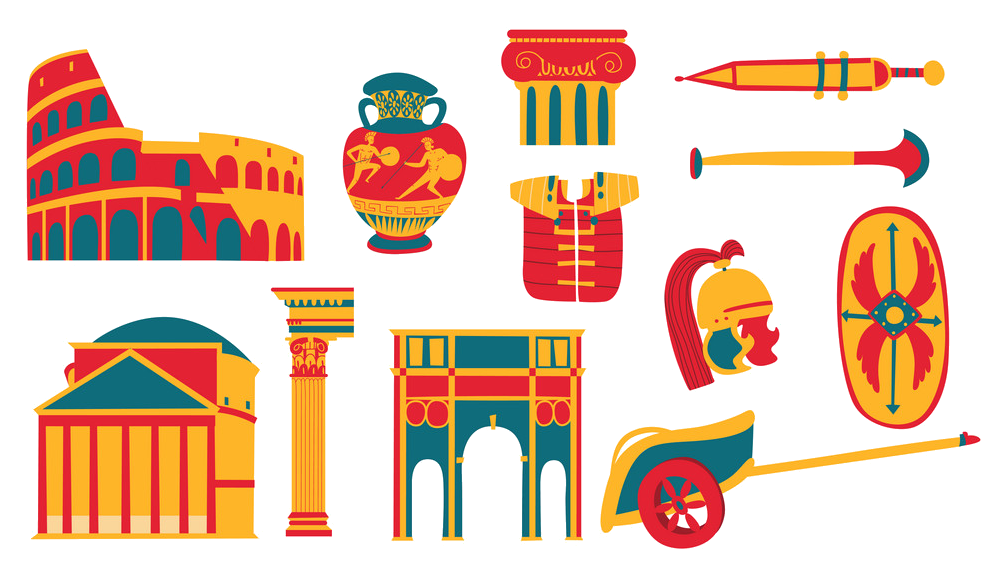 Cities founded by the Romans
Cities founded by the Romans

Paris (französisch [paˈʁi]) ist die Hauptstadt der Französischen Republik und Hauptort der Region Île-de-France. Der Fluss Seine teilt die Stadt in einen nördlichen (Rive Droite, „rechtes Ufer“) und einen südlichen Teil (Rive Gauche, „linkes Ufer“); administrativ ist sie in 20 Stadtbezirke (Arrondissements) unterteilt. Mit mehr als 2,2 Millionen Einwohnern ist Paris die fünftgrößte Stadt der Europäischen Union sowie mit über 12,5 Millionen Menschen nach London die zweitgrößte Metropolregion der EU.[1][2][3][4] Mit einer vergleichsweise kleinen Stadtfläche von nur 105 Quadratkilometern ist Paris mit rund 21.000 Einwohnern pro Quadratkilometer die am dichtesten besiedelte Großstadt Europas.
Paris ist das überragende politische, wirtschaftliche sowie kulturelle Zentrum des zentralistisch organisierten Frankreichs und mit drei Flughäfen und sechs Kopfbahnhöfen dessen größter Verkehrsknotenpunkt. Teile des Seine-Ufers zählen heute zum UNESCO-Welterbe. Die Stadt ist Sitz der UNESCO und darüber hinaus der OECD und der ICC. Sehenswürdigkeiten wie der Eiffelturm, die Kathedrale Notre-Dame oder der Louvre machen die Stadt zu einem beliebten Touristenziel. Mit rund 16 Millionen ausländischen Touristen pro Jahr ist die Stadt hinter London und Bangkok eine der meistbesuchten Städte weltweit.[5] Der Großraum Paris (Île-de-France) verzeichnet jährlich über 47 Millionen Gäste aus dem In- und Ausland und mehr als 184 Millionen Übernachtungen.[6]
Das heutige Paris entwickelte sich seit dem 3. Jahrhundert aus der keltischen Siedlung „Lutetia“ auf der Île de la Cité. Später errichteten die Römer an der Seine eine Stadt, die im 6. Jahrhundert zunächst eine Hauptresidenz des Fränkischen Reiches wurde. Eine Blütezeit der Kunst und Kultur erlebte Paris im 16. Jahrhundert unter Franz I. Durch den Absolutismus, insbesondere unter Ludwig XIV. im 17. Jahrhundert, wurde die Stadt um zahlreiche barocke Gebäude und Prachtstraßen bereichert und so zu einem beispielhaften Muster für barocken Städtebau. Obwohl die Königsresidenz 1682 nach Versailles verlegt wurde, blieb sie aufgrund ihrer politischen und wirtschaftlichen Bedeutung das Zentrum des Landes. In der Französischen Revolution kam ihr ab 1789 eine welthistorische Bedeutung zu. Die Industrialisierung führte im 19. Jahrhundert zu einem enormen Bevölkerungszuwachs, sodass 1846 erstmals die Grenze von einer Million Einwohnern überschritten wurde. In den folgenden Jahrzehnten bekam die Stadt durch die sogenannte Belle Époque und sechs Weltausstellungen weltweite Beachtung. Heute ist sie Hauptort der französischsprachigen und eine der wichtigsten Städte der westlichen Welt.
巴黎市(法语:Paris)是法国的首都和最大城市,也是法国的政治与文化中心。其隶属法兰西岛大区之下的巴黎省(编号第75省;仅辖有1个同名的省区与市镇),也是法兰西岛大区的核心。目前所谓的巴黎市辖区范围大至仅为旧巴黎城墙内(环城道路内侧),并未包含巴黎扩张发展的大巴黎实际都市区域,巴黎市辖区内依照发展历史共分成20个区,,自从1860年代开始就没有重大变化。截至2009年为止,巴黎市内人口超过223万[1] ,巴黎都会区的人口逾1,200万[2] ,是欧洲最大的都会区之一[3]。
巴黎在将近1,000年的时间中是西方世界最大的城市,也曾经是世界上最大的城市(16世纪至19世纪之间)[4][5][6]。目前是世界上最重要的政治与文化中心之一,对于教育、娱乐、时尚、科学、媒体、艺术与政治等方面皆有重大影响力,被认为是世界上最重要的全球城市之一[7][8][9][10] ,一般普世观念上与日本东京、美国纽约、英国伦敦并列世界四大国际级都市。许多国际组织都将总部设立在巴黎,例如联合国教育、科学及文化组织、经济合作与发展组织、国际商会或巴黎俱乐部等。巴黎也是欧洲绿化最深[11] 与最适合人类居住的城市之一[12] ,也是世界上生活费用最高的城市之一[13][14]。
巴黎与法兰西岛大区大约贡献法国4分之1的国内生产总值,在2009年为5,521亿欧元[15] 。根据估计,巴黎是欧洲第一[16] 或第二大城市经济体,也是世界上第六大城市经济体[17]〈按购买力平价PPP调整〉。总共有33间财富世界500强企业的总部设立在巴黎都会区[18],是欧洲最集中的地区。巴黎市辖区范围外的商业区拉德芳斯是欧洲最大的中央商务办公区[19]。巴黎的高等教育机构是欧盟最集中的地区[20],高等教育研究与发展支出也是欧洲最高的地区。巴黎也被认为是世界上最适合研发创新的城市之一[21]。每年有4,200万人造访巴黎与邻近都会区,也让巴黎成为世界上最多观光客造访的城市[20]。巴黎与与邻近都会区总共有3,800个法国国家遗产与4个世界遗产[20]。巴黎也是1989年的欧洲文化之城。
パリ(仏: Paris[1]、巴里)は、フランス北部、イル=ド=フランス地域圏にある都市。フランスの首都であり、イル=ド=フランス地域圏の首府である。
フランス最大の都市であり、同国の政治、経済、文化などの中心である。ロンドン、ニューヨーク、香港、東京などと並ぶ世界トップクラスの世界都市でもある。行政上では、1コミューン単独で県を構成する特別市であり、ルーヴル美術館を含む1区を中心に、時計回りに20の行政区が並ぶ(エスカルゴと形容される[2])。
市域はティエールの城壁跡に造られた環状高速道路の内側の市街地(面積は86.99km2。参考:東京都・山手線の内側は63km2、ニューヨーク市・マンハッタンは59km2)、および、その外側西部のブローニュの森と外側東部のヴァンセンヌの森を併せた形となっており、面積は105.40 km2。ケスタ地形を呈するパリ盆地のほぼ中央に位置し、市内をセーヌ川が貫く。この川の中州であるシテ島を中心に発達した。市内の地形は比較的平坦であるが、標高は最低でセーヌ川沿いの35メートル、最高でモンマルトルの丘の130メートルである[3]。北緯49度とやや高緯度に位置するが、温かい北大西洋海流と偏西風によって一年を通して比較的温暖となっており、西岸海洋性気候の代表的な都市である。
世界有数の大都市であり、アメリカのシンクタンクが2017年に発表した総合的な世界都市ランキングにおいて、ロンドン、ニューヨークに次ぐ世界3位の都市と評価された[4]。日本の民間シンクタンクによる2017年発表の「世界の都市総合力ランキング」(森記念財団都市戦略研究所、森ビル)では、ロンドン、ニューヨーク、東京に次ぐ世界4位の都市と評価された[5]。フランス経済の中心地で、世界屈指の経済都市であり、多国籍企業の本社数や資本市場の規模などビジネス分野を総合評価した都市ランキングでは、ロンドンと共にヨーロッパでトップクラスであり、世界500大企業の本社数では、ニューヨークやロンドンを凌ぎ、西洋の都市では最多である。2014年のアメリカのダウ・ジョーンズらの調査によると、世界7位の金融センターと評価されており、欧州ではロンドンに次ぐ2位である[6]。
パリは年間外国人観光客数が世界一の観光都市である。歴史的な建物を観ることができ、ルーヴル美術館、ポンピドゥーセンターなどを始めとした一流の美術館で厖大な数の一流の美術品を観賞できる。また世界最古のバレエ団や、世界で最も古くから存在している劇団などの公演を楽しむこともできる。
パリ出身者・居住者は男性がパリジャン(仏: Parisien、フランス語発音: [parizjɛ̃] パリズィヤン)、女性がパリジェンヌ(仏: Parisienne、フランス語発音: [parizjɛn] パリズィエンヌ)と呼ばれる。1960年代以降、旧植民地であったアフリカ中部・北部やインドシナ半島、更に近年は中近東や東欧、中国などからの移民も増え、パリジャン・パリジェンヌも多民族・多人種化している。
市域人口は1950年代の約290万人を絶頂に減少し続けたが、ここ数年は微増傾向に転じており、2011年現在で約225万人である(INSEEによる)。2011年の近郊を含む都市的地域の人口では1,200万人を超えており、ロンドンを凌ぐEU最大の都市部を形成している[7]。
Paris (French pronunciation: [paʁi] ( listen)) is the capital and most populous city of France, with an area of 105 square kilometres (41 square miles) and a population of 2,206,488.[5][6] Since the 17th century, Paris has been one of Europe's major centres of finance, commerce, fashion, science, music, and painting. The Paris Region had a GDP of €681 billion (US$850 billion) in 2016, accounting for 31 per cent of the GDP of France.[7] In 2013–2014, the Paris Region had the third-highest GDP in the world and the largest regional GDP in the EU. According to the Economist Intelligence Unit Worldwide Cost of Living Survey in 2018, Paris was the second-most expensive city in the world, behind Singapore and ahead of Zurich, Hong Kong, Oslo and Geneva.[8]
listen)) is the capital and most populous city of France, with an area of 105 square kilometres (41 square miles) and a population of 2,206,488.[5][6] Since the 17th century, Paris has been one of Europe's major centres of finance, commerce, fashion, science, music, and painting. The Paris Region had a GDP of €681 billion (US$850 billion) in 2016, accounting for 31 per cent of the GDP of France.[7] In 2013–2014, the Paris Region had the third-highest GDP in the world and the largest regional GDP in the EU. According to the Economist Intelligence Unit Worldwide Cost of Living Survey in 2018, Paris was the second-most expensive city in the world, behind Singapore and ahead of Zurich, Hong Kong, Oslo and Geneva.[8]
The City of Paris's administrative limits form an East-West oval centred on the island at its historical heart, the Île de la Cité; this island is near the top of an arc of the river Seine that divides the city into southern Rive Gauche (Left Bank) and northern Rive Droite regions. Paris is the core of a built-up area that extends well beyond its limits: commonly referred to as the agglomération Parisienne, and statistically as a unité urbaine (a measure of urban area), the Paris agglomeration's 2013 population of 10,601,122 made it the largest urban area in the European Union.[3][not in citation given] City-influenced commuter activity reaches well beyond even this in a statistical aire urbaine de Paris (a measure of metropolitan area), that had a 2013 population of 12,405,426,[9] a number one-fifth the population of France,[10] the largest metropolitan area in the Eurozone.
The city is a major rail, highway, and air-transport hub served by two international airports: Paris-Charles de Gaulle (the second busiest airport in Europe after London Heathrow Airport with 69.5 million passengers in 2017) and Paris-Orly.[11][12] Opened in 1900, the city's subway system, the Paris Métro, serves 5.23 million passengers daily,[13] and is the second busiest metro system in Europe after Moscow Metro. Paris's Gare du Nord is one of the ten busiest railway stations in the world, with 262 million passengers in 2015.[14]
Paris is especially known for its museums and architectural landmarks: the Louvre was the most visited art museum in the world in 2017, with 8.1 million visitors.[15][16] The Musée d'Orsay and Musée de l'Orangerie are noted for their collections of French Impressionist art, and the Pompidou Centre Musée National d'Art Moderne has the largest collection of modern and contemporary art in Europe. The historical district along the Seine in the city centre is classified as a UNESCO Heritage Site. Popular landmarks in the centre of the city include the Cathedral of Notre Dame de Paris and the Gothic royal chapel of Sainte-Chapelle, both on the Île de la Cité; the Eiffel Tower, constructed for the Paris Universal Exposition of 1889; the Grand Palais and Petit Palais, built for the Paris Universal Exposition of 1900; the Arc de Triomphe on the Champs-Élysées, and the Basilica of Sacré-Coeur on the hill of Montmartre. Paris received 23 million visitors in 2017, measured by hotel stays, with the largest numbers of foreign visitors coming from the United States, the UK, Germany and China.[17][18] It was ranked as the third most visited travel destination in the world in 2017, after Bangkok and London.[19]
The football club Paris Saint-Germain and the rugby union club Stade Français are based in Paris. The 80,000-seat Stade de France, built for the 1998 FIFA World Cup, is located just north of Paris in the neighbouring commune of Saint-Denis. Paris hosts the annual French Open Grand Slam tennis tournament on the red clay of Roland Garros. Paris hosted the Olympic Games in 1900, 1924 and will host the 2024 Summer Olympics. The 1938 and 1998 FIFA World Cups, the 2007 Rugby World Cup, and the 1960, 1984, and 2016 UEFA European Championships were also held in the city and, every July, the Tour de France bicycle race finishes there.
Paris (prononcé [pa.ʁi] Écouter) est la capitale de la France. Elle se situe au cœur d'un vaste bassin sédimentaire aux sols fertiles et au climat tempéré, le bassin parisien, sur une boucle de la Seine, entre les confluents de celle-ci avec la Marne et l'Oise. Ses habitants s’appellent les Parisiens. Paris est également le chef-lieu de la région Île-de-France et l'unique commune française qui est en même temps un département. Commune centrale de la métropole du Grand Paris, créée en 2016, elle est divisée en arrondissements, comme les villes de Lyon et de Marseille, au nombre de vingt. L’État y dispose de prérogatives particulières exercées par le préfet de police de Paris.
Ville la plus peuplée de France, elle est quatrième parmi les aires urbaines européennes derrière Moscou, Istanbul et Londres et la 29e plus peuplée du monde. Paris compte 2,21 millions d'habitants au 1er janvier 2015. L'agglomération parisienne s’est largement développée au cours du XXe siècle, rassemblant 10,71 millions d'habitants au 1er janvier 2015, et son aire urbaine (l'agglomération et la couronne périurbaine) comptait 12,53 millions d'habitants.
La position de Lutèce, sur une île permettant le franchissement du grand fleuve navigable qu'est la Seine par une voie reliant le Nord et le Sud des Gaules, en fait dès l'Antiquité une cité importante, capitale des Parisii, puis lieu de séjour d'un empereur romain. Sa position au centre du territoire contrôlé par les rois Francs la fait choisir comme capitale de la France à la place de Tournai. Située au cœur d'un territoire agricole fertile avec un climat humide et doux, Paris devient une des principales villes de France au cours du Xe siècle, avec des palais royaux, de riches abbayes et une cathédrale ; au cours du XIIe siècle, avec l'Université de Paris, la cité devient un des premiers foyers en Europe pour l’enseignement et les arts. Le pouvoir royal se fixant dans cette ville, son importance économique et politique ne cesse de croître. Ainsi, au début du XIVe siècle, Paris est l'une des villes les plus importantes du monde chrétien. Au XVIIe siècle, elle est la capitale de la principale puissance politique européenne, au XVIIIe siècle l'un des plus grands centres culturels de l’Europe et au XIXe siècle la capitale des arts et des plaisirs. Paris joue donc un rôle culturel, politique et économique majeur dans l’histoire de l'Europe et du monde occidental au cours du IIe millénaire.
Symbole de la culture française, abritant de nombreux monuments, la ville, surnommée la Ville Lumière, attire en 2017 près de 34 millions de visiteurs ce qui en fait une des capitales les plus visitées au monde. Paris occupe également une place prépondérante dans le monde dans le milieu de la mode, du luxe et de la haute gastronomie. La capitale française n'est jumelée qu'avec une seule autre ville, Rome, ce qui est valable dans l'autre sens, avec ce slogan : « Seul Paris est digne de Rome, seule Rome est digne de Paris ». Paris sera, par ailleurs, en 2024 la deuxième ville avec Londres à avoir accueilli trois fois les Jeux olympiques après ceux de 1900 et ceux de 1924.
La ville est, avec sa banlieue, la capitale économique et commerciale de la France, ainsi que sa première place financière et boursière. Elle accueillera en 2019 l'Autorité bancaire européenne. La région parisienne, avec un produit intérieur brut (PIB) de 649 milliards d'euros en 2014, est un acteur économique européen majeur et la première région européenne par le PIB régional, devant la Rhénanie du Nord-Westphalie (627 milliards d'euros) et le Grand Londres (509 milliards d'euros). Elle est également l'une des régions les plus riches d'Europe avec un PIB par habitant de 52 900 euros en 2014. Paris est le siège de plusieurs organisations internationales comme l'UNESCO ou l'OCDE.
La densité de ses réseaux ferroviaire, autoroutier et de ses structures aéroportuaires en font un point de convergence pour les transports nationaux et internationaux. Cette situation résulte d’une longue évolution, en particulier des conceptions centralisatrices des monarchies et des républiques, qui donnent un rôle considérable à la capitale dans le pays et tendent à y concentrer les institutions. Depuis les années 1960, les politiques gouvernementales oscillent toutefois entre déconcentration et décentralisation. La macrocéphalie dont est atteinte la ville se concrétise par la convergence de la plupart des réseaux routiers et ferroviaires du pays en son centre et des écarts démographiques et économiques disproportionnés entre la capitale et la province : près de 19 % de la population française vit dans l'aire urbaine de Paris.
París (en francés Paris, pronunciado  [paʁi] (?·i)) es la capital de Francia y su ciudad más poblada. Capital de la región de Isla de Francia (o "Región Parisina"), es constituida en la única comuna unidepartamental del país. Está situada a ambos márgenes de un largo meandro del río Sena, en el centro de la cuenca parisina, entre la confluencia del río Marne y el Sena, aguas arriba, y el Oise y el Sena, aguas abajo.
[paʁi] (?·i)) es la capital de Francia y su ciudad más poblada. Capital de la región de Isla de Francia (o "Región Parisina"), es constituida en la única comuna unidepartamental del país. Está situada a ambos márgenes de un largo meandro del río Sena, en el centro de la cuenca parisina, entre la confluencia del río Marne y el Sena, aguas arriba, y el Oise y el Sena, aguas abajo.
La ciudad de París, dentro de sus estrechos límites administrativos, tiene una población de 2 273 305 habitantes en 2015.2 Sin embargo, en el siglo XX, el área metropolitana de París se expandió más allá de los límites del municipio de París, y es hoy en día, con una población de 12 405 426 habitantes en 2013, la segunda área metropolitana del continente europeo (después de Londres) y la 28ª del mundo.4
La región de París es junto con la de Londres, uno de los núcleos económicos más importantes de Europa.6 Con 607 000 millones de euros (845 000 millones de dólares), produjo más de una cuarta parte del producto interior bruto (PIB) de Francia en 2011.7 La Défense es el principal barrio de negocios de Europa,8 alberga la sede social de casi la mitad de las grandes empresas francesas, así como la sede de veinte de las 100 más grandes del mundo.
Durante el siglo XIX y XX junto con la ciudad de Londres, 9 París fue el centro de desarrollo de proyectos arquitectónicos dentro del marco de la Revolución Industrial y sus famosas exposiciones. Ejemplos de ello son: el Mercado de la Madeleine, en 1824; las Grandes Halles iniciadas en 1853 , las Galerie des Machines y la Torre Eiffel ambas realizadas en la exposición de París de 1889.
Es conocida también como la «Ciudad Luz» (la Ville lumière), es el destino turístico más popular del mundo, con más de 42 millones de visitantes extranjeros por año.10 Cuenta con muchos de los monumentos más famosos y admirados del orbe: la Torre Eiffel, la Catedral de Notre Dame, la avenida de los Campos Elíseos, el Arco de Triunfo, la Basílica del Sacré Cœur, el Palacio de Los Inválidos, el Pante&
 Chancellerie des universités de Paris
Chancellerie des universités de Paris
 France
France

 Ile-de-France
Ile-de-France
 Nobel prize
Nobel prize
 Nobel Prize in Chemistry
Nobel Prize in Chemistry
 Nobel prize
Nobel prize
 Nobel Peace Prize
Nobel Peace Prize
 Nobel prize
Nobel prize
 Nobel Prize in Literature
Nobel Prize in Literature
 Nobel prize
Nobel prize
 Nobel Prize in Physics
Nobel Prize in Physics
 Nobel prize
Nobel prize
 Nobel Prize in Physiology or Medicine
Nobel Prize in Physiology or Medicine
 Nobel prize
Nobel prize
 Nobel Memorial Prize in Economic Sciences
Nobel Memorial Prize in Economic Sciences
 Nobel prize
Nobel prize
 University/Institute
University/Institute
 Sinology
Sinology


The University of Paris (French: Université de Paris), metonymically known as the Sorbonne (French: [sɔʁbɔn], one of its buildings), was a university in Paris, France, from around 1150 to 1793, and from 1806 to 1970.
パリ大学(仏:Université de Paris)は、かつてフランス共和国のパリに存在した大学。1970年に、パリ、クレテイユおよびヴェルサイユの3大学区にある13の大学に分割された[1]。これらの大学では、多くのノーベル賞受賞者を送り出している他、法学、政治学、科学、物理学、神学などの分野で優秀な学者を輩出している。また芸術の教育機関としても名高い。
Emerging around 1150 as a corporation associated with the cathedral school of Notre Dame de Paris, it was considered the second-oldest university in Europe.[1] Officially chartered in 1200 by King Philip II (Philippe-Auguste) of France and recognised in 1215 by Pope Innocent III, it was later often nicknamed after its theological College of Sorbonne founded by Robert de Sorbon and chartered by French King Saint Louis around 1257.[citation needed]
Internationally highly reputed for its academic performance in the humanities ever since the Middle Ages – notably in theology and philosophy – it introduced several academic standards and traditions that have endured ever since and spread internationally, such as doctoral degrees and student nations. Vast numbers of popes, scientists, intellectuals and royalty were educated at the University of Paris. A few of the Colleges of the time are still visible close to Pantheon and Luxembourg Gardens : College des Bernardins (18, rue de Poissy 75005), Hotel de Cluny (6, Place Paul Painleve 75005), College Sainte Barbe (4, rue Valette 75005), College d'Harcourt (44 Boulevard Saint-Michel 75006), Cordeliers (21, Rue Ecole de Medecine 75006). [2]
In 1793, during the French Revolution period, the university was closed and by Item-27 of the Revolutionary Convention, the college endowments and buildings were sold.[3] A new University of France replaced it in 1806 with four independent faculties: the Faculty of Humanities ("Faculté des Lettres"), the Faculty of Law (later including Economics), the Faculty of Science, the Faculty of Medicine and the Faculty of Theology (closed in 1885).
In 1970, following the May 1968 events, the university was divided into 13 autonomous universities. Although all the thirteen universities that resulted of the original University of Paris split can be considered its inheritors, just three universities of the post-1968 universities inherited the name "Sorbonne", as well as its physical location in the Latin Quarter (i.e. Pantheon-Sorbonne University (Paris I); University of Paris III: Sorbonne Nouvelle; and Paris-Sorbonne University (Paris IV).[4][5][6][7]
From 2010, several of the University of Paris successors started to reorganise themselves into different groups of universities and institutions (COMUE), that, later, were upgraded to "pôles de recherche et d'enseignement supérieur". As a result, various university groups exist in the Paris area, among them Sorbonne Paris Cité, Sorbonne Universities, the University of Paris-Saclay, Paris Lumiéres, Paris-Seine, and so on.[8]
In January 2018, two of the inheritors of the old University of Paris, Paris-Sorbonne University and Pierre and Marie Curie University, merged into a single university called Sorbonne University.[9][10][11]
In 2019, two other inheritors of the University of Paris, namely Paris Diderot University and Paris Descartes University, are also expected to merge.[12]
L'Università di Parigi, conosciuta anche come la Sorbona, fu fondata nel 1170 circa. Fu riconosciuta dal Re Filippo II di Francia nel 1200 e dal papa Innocenzo III nel 1215 (in particolare, dal suo legato pontificio Roberto di Courçon). Soppressa nel 1793 all'indomani della Rivoluzione Francese, fu rifondata nel 1896.
Dal 1º gennaio 2018, con la fusione dei due atenei Paris-Sorbonne e Università Pierre e Marie Curie, è stata istituita un'unica università denominata Sorbonne Université[1][2]
La Universidad de París (en francés: Université de Paris), también conocida como La Sorbona, fue una de las universidades medievales más antiguas y más importantes. Fue fundada a mediados del siglo XII por el obispo de la ciudad y sus instalaciones se situaron cerca de la Catedral Notre Dame de París. En 1200 fue reconocida por el rey Felipe II y en 1215 por el papa Inocencio III. Adquirió rápidamente un gran prestigio, especialmente en filosofía y teología. Se constituyó como asociación de todos los colegios preexistentes en la ciudad de París situados a la orilla izquierda del río Sena (entre ellos La Sorbona, fundado en el año 1215 y con gran prestigio durante la Edad Media debido a su facultad de teología, cuyo nombre se asociaría posteriormente a toda la universidad). Su objetivo era formar a los funcionarios de la administración real (Consejo de Estado, parlamentos, tribunales, hacienda, etc.) y de instituciones eclesiásticas (profesores, médicos, bibliotecarios, obispos, abades, etc.).
Durante la Edad Moderna sufrió una situación de declive. En 1793 fue cerrada y sustituida por escuelas superiores especializadas en derecho, medicina, ingeniería, escuelas normales, etc. Un siglo más tarde, en 1896, se reabrió con cuatro facultades: Derecho, Medicina, Letras y Ciencias.
Tras los sucesos de mayo de 1968 y las reformas de 1968-1971 la universidad se dividió en trece universidades independientes, algunas de ellas multidisciplinares y otras especializadas en determinados ámbitos del conocimiento.
Парижский университет (фр. Université de Paris) — французский университет в Париже, один из старейших в мире; основан в середине XII века; будучи интернациональным образовательным учреждением, очень скоро заслужил европейскую репутацию. Его центром является здание Сорбонны в Латинском квартале на левом берегу Сены.
Как полудуховное общество магистров (преподавателей), подчинённое духовной власти, Парижский университет представлял полный контраст со светскими, республиканскими университетами североитальянских городов; в качестве основного образования (Studium generale) он был, главным образом, высшей школой богословия и свободных искусств, включал в свои программы юриспруденцию только в виде канонического права, а в медицине уступал первенство другим studia generalia.
Став величайшей школой всей Западной Европы, имея среди своих учеников и учителей представителей всех наций и величайших учёных средневековья — Фому Аквинского, Альберта Великого, Раймунда Луллия, Роджера Бэкона, Дунса Скота, Уильяма Оккама, — университет стал высшим авторитетом в вопросах веры и разума и во время падения папства, в эпоху великого раскола, в лице Д’Альи, Герсона и Клеманжи был руководителем католической церкви и сделал попытку реформировать её во главе и членах.
После майских событий 1968 года был преобразован в 1970 году в 13 парижских независимых университетов.





 Military, defense and equipment
Military, defense and equipment




 Military, defense and equipment
Military, defense and equipment
 §***Important peace conferences in world history
§***Important peace conferences in world history
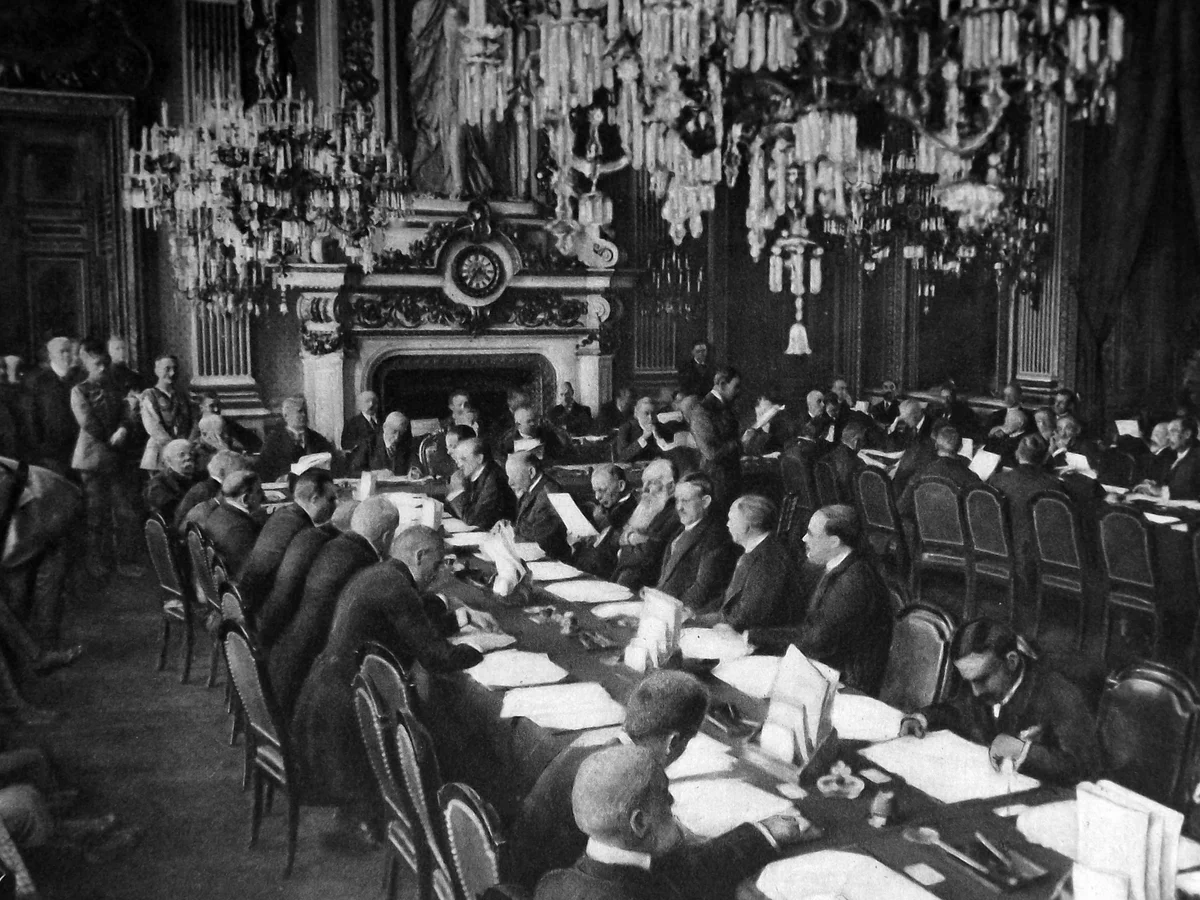

1918年11月,第一次世界大战宣告结束。1919年1月,胜利的协约国集团为了解决战争所造成的问题,以及奠定战后的和平,于是召开巴黎和会。这个和会因为战败国和中立国均未获邀请参加,所以这是胜利国举行的和会,而胜利国又有大小之分别,它又是个大国操纵的和会。分别由法国总理克里孟梭、英国首相大卫·劳合·乔治、美国总统威尔逊主导了和会的进行[参1]。
和会上签订了处置战败国德国的凡尔赛和约,同时还分别同德国的盟国奥地利、匈牙利、土耳其等国签订了一系列和约。这些和约和凡尔赛和约一起构成了凡尔赛体系,确立了一次大战后由法国、英国、美国等主要战胜国主导的国际政治格局。会议通过领土分配及赔款等措施重塑现实政治格局,遏制德国等战败国及苏维埃俄国等共产国家,但与此同时通过筹组一个国际联盟来企图建立理想的国际外交规范。
参加巴黎和会的各国代表有1000多人,其中全权代表70人。和会及后续的活动先后完成对各战败国的和约,其中对德和约的凡尔赛条约是最为重要的条约,对日后的国际关系有着深远影响。
Die Pariser Friedenskonferenz fand vom 18. Januar 1919 bis zum 21. Januar 1920 zwischen den Siegern des Ersten Weltkriegs unter Ausschluss der Besiegten statt. Sie hatte das Ziel, einen Friedensvertrag mit Deutschland und seinen Verbündeten zu erarbeiten. Ihr Ergebnis waren die Pariser Vorortverträge, darunter auch der Friedensvertrag von Versailles.
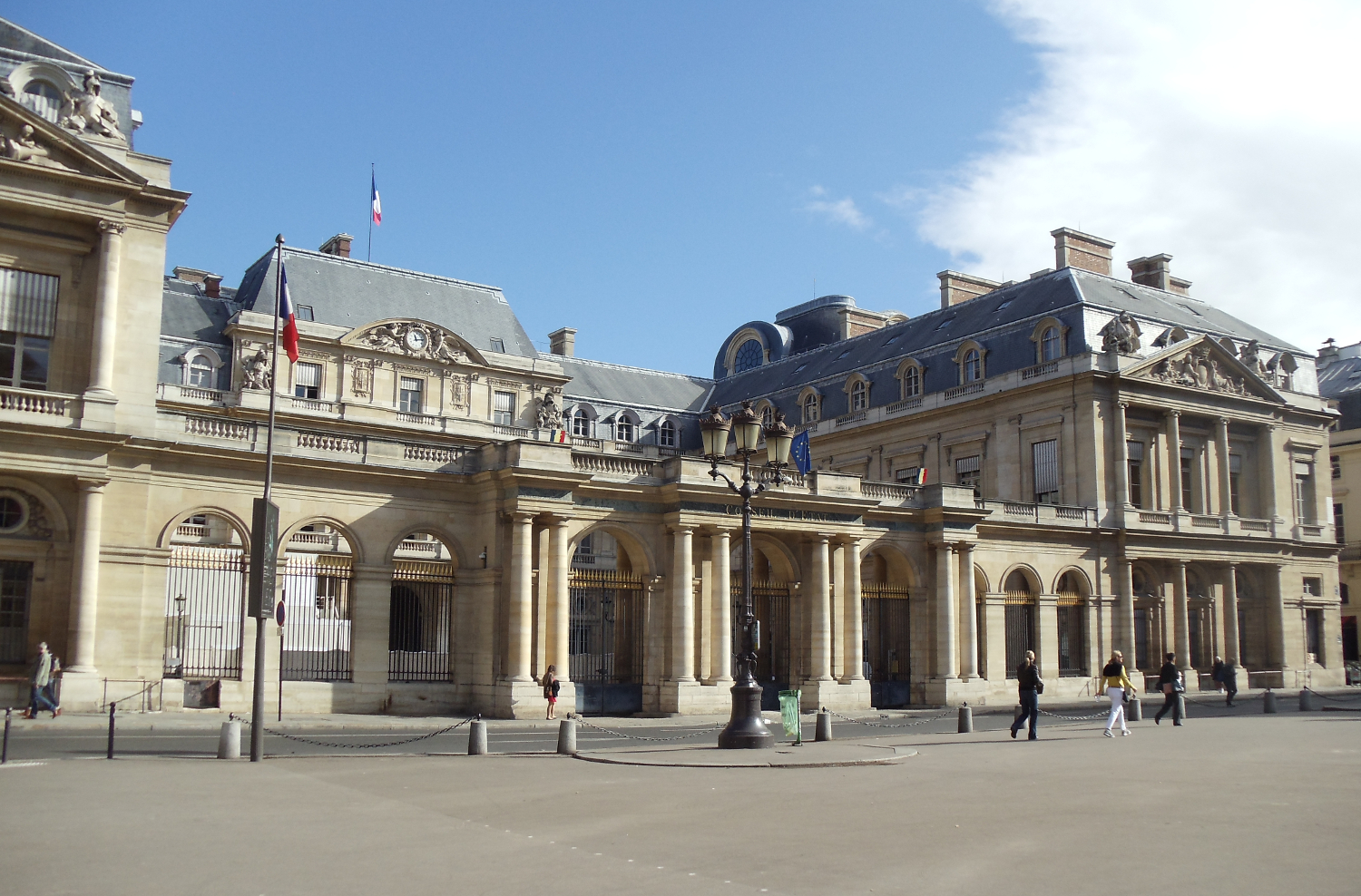







Die katholische Kirche Notre-Dame de Paris („Unsere Liebe Frau von Paris“) ist die Kathedrale des Erzbistums Paris. Die Unserer Lieben Frau, also der Gottesmutter Maria geweihte Kirche wurde in den Jahren von 1163 bis 1345 errichtet und ist somit eines der frühesten gotischen Kirchengebäude Frankreichs. Ihr Name lautet auf Französisch Cathédrale Notre-Dame de Paris, oft einfach nur Notre-Dame. Ihre charakteristische Silhouette erhebt sich im historischen Zentrum von Paris auf der Ostspitze der Seine-Insel Île de la Cité im 4. Pariser Arrondissement.
Die beiden Türme sind 69 Meter hoch, der Dachreiter 96 Meter. Das Kirchenschiff ist im Inneren 130 Meter lang, 48 Meter breit und 35 Meter hoch; es bietet bis zu 10.000 Personen Platz.
巴黎圣母院(法语:Notre-Dame de Paris),正式名称为巴黎圣母主教座堂(Cathédrale Notre-Dame de Paris),是位于法国巴黎西堤岛的天主教教堂,也是天主教巴黎总教区的主教座堂,约建造于1163年到1250年间,属于哥特式建筑形式,是法兰西岛地区的哥特式教堂群里面,非常具有关键代表意义的一座。
圣母院是巴黎最有代表性的历史古迹、观光名胜与宗教场所。而在圣母院门口外的圣母院广场中,有个原点(Point Zéro)纪念物,是法国丈量全国各地里程时所使用的起测点,使得圣母院被视为法国文化中心点的象征意义,又更加强烈了一点。圣母院法文原名中的“Notre Dame”原意为“我们的女士”,这位女士正是指耶稣的母亲圣母玛利亚,这种敬称也广泛于西方国家的语言使用,也和维克多·雨果的小说《巴黎圣母院》同名。
パリのノートルダム大聖堂(Cathédrale Notre-Dame de Paris、ノートルダム寺院とも) はゴシック建築を代表する建物であり、フランス、パリのシテ島にあるローマ・カトリック教会の大聖堂[1]。「パリのセーヌ河岸」という名称で、周辺の文化遺産とともに1991年にユネスコの世界遺産に登録された。現在もノートルダム大聖堂は、パリ大司教座聖堂として使用されている。ノートルダムとはフランス語で「我らが貴婦人」すなわち聖母マリアを指す。
パリのノートル・ダム大聖堂の正面に向かって左側のポルタイユ(正面)には、聖母マリアの聖母被昇天の主題が取り上げられている。中段では聖母マリアが地上における生を終える場面が描かれ、上段でキリストから祝福を授けられている聖母マリアが鎮座している。 キリストを中心にして天使や聖人たちが描かれており、過去、未来、未来という崩れた構成となっている。
Notre-Dame de Paris (/ˈnɒtrə ˈdɑːm, ˈnoʊtrə ˈdeɪm/;[3] French: [nɔtʁə dam də paʁi] (![]() listen); meaning "Our Lady of Paris"), also known as Notre-Dame Cathedral or simply Notre-Dame, is a medieval Catholic cathedral on the Île de la Cité in the fourth arrondissement of Paris, France.[4] The cathedral is widely considered to be one of the finest examples of French Gothic architecture. The innovative use of the rib vault and flying buttress, the enormous and colorful rose windows, and the naturalism and abundance of its sculptural decoration all set it apart from earlier Romanesque architecture.[5]
listen); meaning "Our Lady of Paris"), also known as Notre-Dame Cathedral or simply Notre-Dame, is a medieval Catholic cathedral on the Île de la Cité in the fourth arrondissement of Paris, France.[4] The cathedral is widely considered to be one of the finest examples of French Gothic architecture. The innovative use of the rib vault and flying buttress, the enormous and colorful rose windows, and the naturalism and abundance of its sculptural decoration all set it apart from earlier Romanesque architecture.[5]
The cathedral was begun in 1160 and largely completed by 1260, though it was modified frequently in the following centuries. In the 1790s, Notre-Dame suffered desecration during the French Revolution when much of its religious imagery was damaged or destroyed. Soon after the publication of Victor Hugo's novel The Hunchback of Notre Dame in 1831, popular interest in the building revived. A major restoration project supervised by Eugène Viollet-le-Duc began in 1845 and continued for twenty-five years. Beginning in 1963, the facade of the Cathedral was cleaned of centuries of soot and grime, returning it to its original color. Another campaign of cleaning and restoration was carried out from 1991-2000.[6]
As the cathedral of the Archdiocese of Paris, Notre-Dame contains the cathedra of the Archbishop of Paris, currently Michel Aupetit. 12 million people visit Notre-Dame yearly, which makes it the most visited monument in Paris.[7]
La cathédrale Notre-Dame de Paris, en forme courte Notre-Dame, est la cathédrale de l'archidiocèse de Paris, en France. Elle est située dans l'est de l'île de la Cité, dans le 4e arrondissement de Paris. Sa façade occidentale domine le parvis Notre-Dame - place Jean-Paul-II.
Sa construction commencée sous l'impulsion de l'évêque Maurice de Sully, s'étend sur plus de deux siècles, de 1163 au milieu du XIVe siècle. Le style n’est donc pas d'une uniformité totale : la cathédrale possède ainsi des caractères du gothique primitif (voûtes sexpartites de la nef) et du gothique rayonnant. Les deux rosaces qui ornent chacun des bras du transept sont parmi les plus grandes d’Europe, et mesurent chacune treize mètres de diamètre. Lors de son achèvement, la cathédrale est l'une des plus grandes d'Occident. Après la tourmente révolutionnaire, la cathédrale bénéficie de 1844 à 1864 d'une restauration importante et parfois controversée, sous la direction de l’architecte Viollet-le-Duc, qui y incorpore des éléments et des motifs inédits.
La cathédrale est depuis l'origine l'un des monuments les plus emblématiques de Paris. Longtemps la plus haute construction de la ville, elle occupe à Paris une place symbolique de premier rang et est l'une des plus célèbres cathédrales du pays, avec celles de Reims, où étaient sacrés les rois de France, de Strasbourg, d'Amiens, de Beauvais et de Chartres. Édifice à la fois religieux et patrimonial, elle est liée à de nombreux épisodes de l’histoire de France. Église paroissiale royale au Moyen Âge, elle accueille l’arrivée de la Sainte Couronne en 1239, puis bien plus tard, le sacre de Napoléon Ier en 1804, le baptême du duc de Bordeaux en 1821, les funérailles d’Adolphe Thiers, de Sadi Carnot. C'est sous ses voûtes qu'est chanté un Magnificat lors de la libération de Paris, le 26 août 1944. Des cérémonies religieuses y ont lieu à la mort du général de Gaulle (1970), de Georges Pompidou (1974) et de François Mitterrand (1996).
Dans le domaine littéraire, elle figure notamment au centre du roman de Victor Hugo, Notre-Dame de Paris, publié en 1831.
Cette cathédrale (aussi basilique mineure) accueille aujourd’hui plus de 20 millions de visiteurs par an (dont 13,6 millions qui y sont entrés en 20112), ce qui en fait le monument le plus visité de Paris et de toute l’Europe. En 2013, est célébré son 850e anniversaire de sa construction.
La cattedrale metropolitana di Nostra Signora (in francese: Cathédrale métropolitaine Notre-Dame; in latino: Ecclesia Cathedralis Nostrae Dominae[1]), conosciuta anche come cattedrale di Notre-Dame o più semplicemente Notre-Dame (pronuncia [nɔtʁə dam]), è il principale luogo di culto cattolico di Parigi, cattedrale dell'arcidiocesi di Parigi,[2][3][4] il cui arcivescovo metropolita è anche primate di Francia.
La cattedrale, ubicata nella parte orientale dell'Île de la Cité, nel cuore della capitale francese, nella piazza omonima,[5] rappresenta una delle costruzioni gotiche più celebri del mondo ed è uno dei monumenti più visitati di Parigi.
In base alla Legge francese sulla separazione tra Stato e Chiesa del 1905, l'edificio è proprietà dello Stato francese, come tutte le altre cattedrali fatte costruire dal Regno di Francia, e il suo utilizzo è assegnato alla Chiesa cattolica.[6]
La cattedrale, basilica minore dal 27 febbraio 1805,[7] è monumento storico di Francia dal 1862[8] e Patrimonio dell'Umanità dell'UNESCO dal 1991.[9]
La catedral de Nuestra Señora (en francés, Cathédrale Notre-Dame) es una catedral de culto católico, sede de la archidiócesis de París, la capital de Francia.
Se trata de uno de los edificios más señeros y antiguos de cuantos se construyeron en estilo gótico. Se empezó su edificación en el año 1163 y se terminó en el año 1345. Dedicada a María, madre de Jesucristo, se sitúa en la pequeña isla de la Cité, rodeada por las aguas del río Sena. Es uno de los monumentos más populares de la capital francesa.
Собо́р Пари́жской Богома́тери, также парижский собор Нотр-Да́м, Нотр-Да́м де Пари́ или Нотр-Да́м-де-Пари́[1] (фр. Notre-Dame de Paris) — католический храм в центре Парижа, один из символов французской столицы. Кафедральный собор архиепархии Парижа. Расположен в восточной части острова Сите, в четвёртом городском округе, на месте первой христианской церкви Парижа — базилики Святого Стефана, построенной, в свою очередь, на фундаменте галло-римского храма Юпитера. Готический собор возводился по инициативе парижского епископа Мориса де Сюлли в период 1163—1345 годов. Алтарная часть освящена в 1182 году; западный фасад и башни закончены во второй четверти XIII века. С 1235 года вносились большие изменения: обустроены часовни между контрфорсами нефа (сер. XIII века); увеличен размер трансепта (архитекторы Жан де Шель с 1250 и Пьер де Монтрей вплоть до 1267); добавлены часовни хора (Пьер де Шель[fr] и Жан Рави[fr] в нач. XIV в.) и большие аркбутаны деамбулатория (Жан Рави, нач. XIV в.). В XIX веке под руководством Виолле-ле-Дюка отреставрирована повреждённая в Революцию скульптурная часть, восстановлены витражные розы нефа и возведён новый шпиль вместо утраченного.[2]
Один из первых больших готических соборов c шестичастным нервюрным сводом[3], при этом сохраняющий характеристики переходного этапа от романского стиля Нормандии: двойные боковые продольные нефы и наличие трибун (верхних галерей). Западный фасад свидетельствует о мастерстве архитектурной композиции; скульптурное оформление его входных порталов является шедевром готического искусства. Портал Святой Анны справа — самый старый (конец XII века); портал Страшного суда в центре (1220—1230 годы) подвергся многим реставрациям; портал Богоматери — северный, слева (начало XIII века). С южной стороны храма портал (2-я пол. XIII века) трансепта посвящён первому христианскому мученику святому Стефану. Cтаринные витражи сохранились только в двух розах трансепта и розе главного входа.[2]
Обретению славы и спасению собора от разрушения во многом способствовал одноимённый исторический (повествующий о XV веке) роман Виктора Гюго, опубликованный в 1831 году.



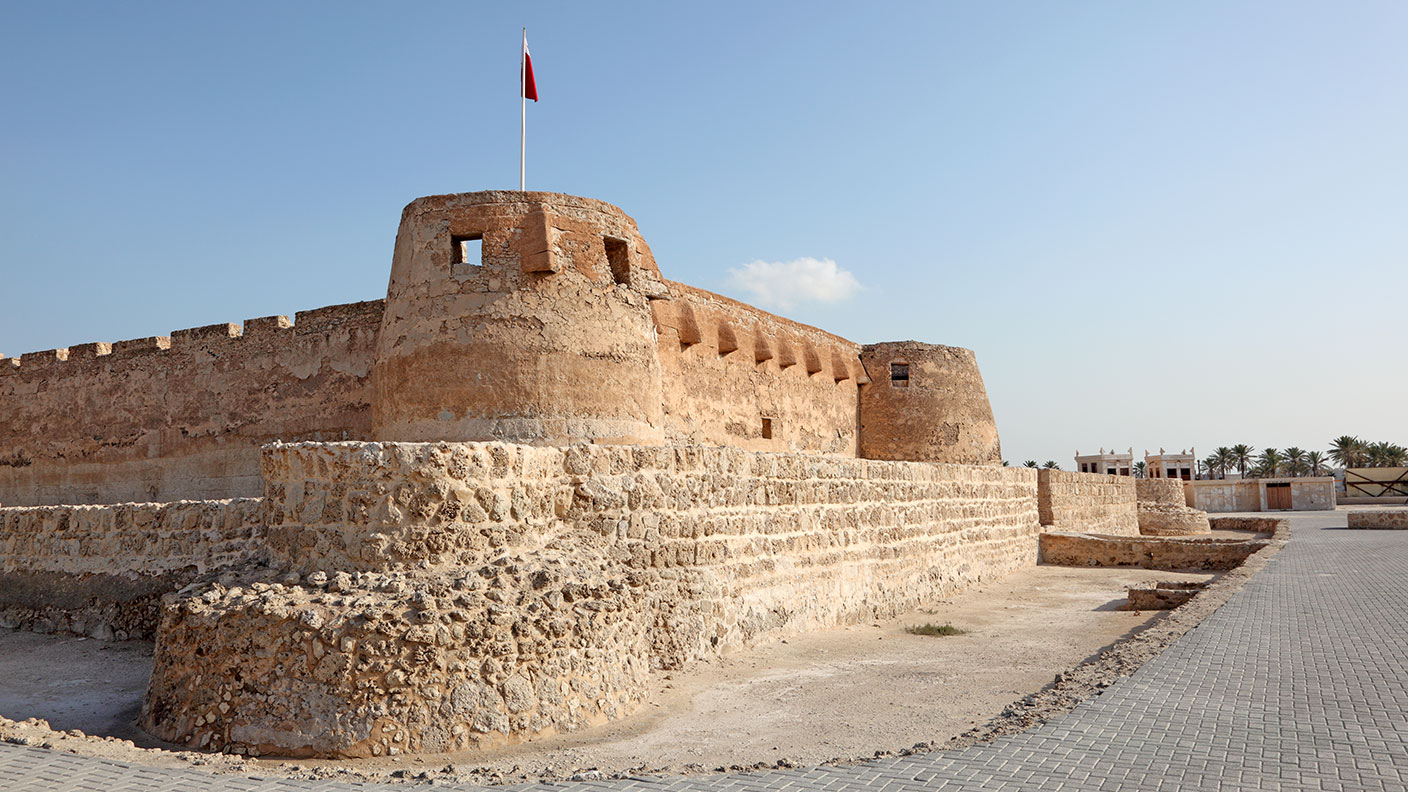
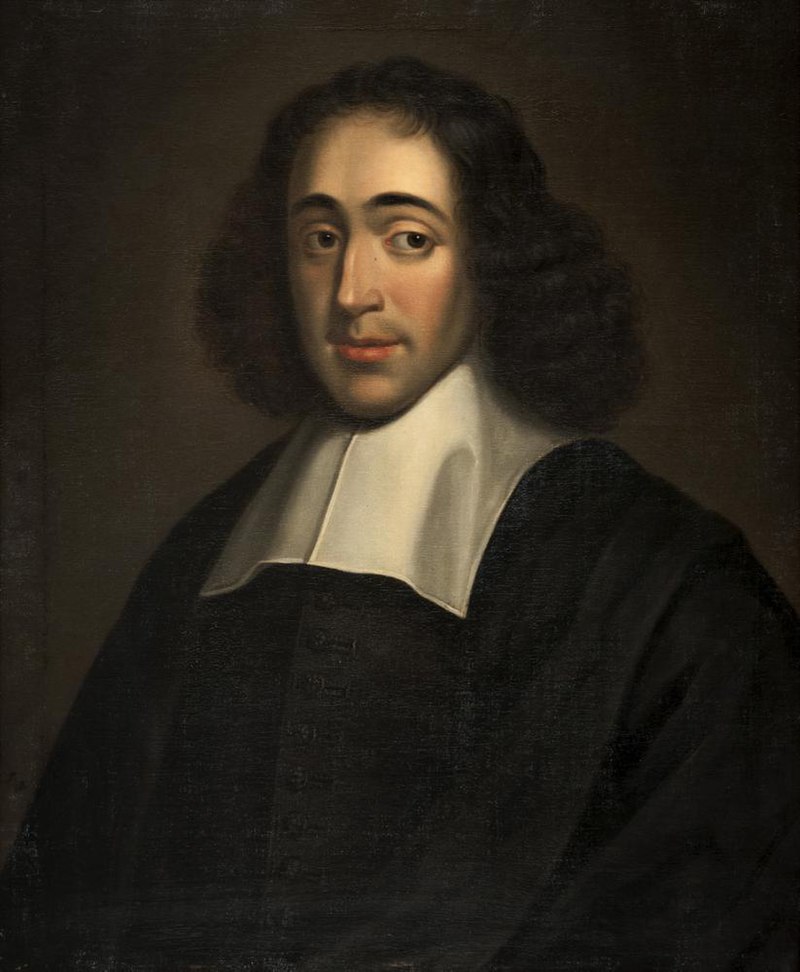
Baruch de Spinoza (hebräisch ברוך שפינוזה, portugiesisch Bento de Espinosa, latinisiert Benedictus de Spinoza; geboren am 24. November 1632 in Amsterdam; gestorben am 21. Februar 1677 in Den Haag) war ein niederländischer Philosoph. Er war Sohn sephardischer Immigranten aus Portugal und hatte Portugiesisch als Erstsprache.[1] Er wird dem Rationalismus zugeordnet und gilt als einer der Begründer der modernen Bibel- und Religionskritik.
巴鲁赫·斯宾诺莎(拉迪诺语:Baruch de Spinoza,拉丁语:Benedictus de Spinoza,1632年11月24日—1677年2月21日)是荷兰的哲学家。斯宾诺莎是17世纪理性主义先驱,启蒙时代[5][6]以及现代圣经批判学[7]的开创者,他的作品引导了现代对自我及宇宙的认识[8],因此被认为是“近世最重要的哲学家之一”。[9][10][11] 斯宾诺莎继承了勒内·笛卡尔的思想,是荷兰黄金时代的哲学领军者。斯宾诺莎的名字“巴鲁赫”意为“受祝福的”,在不同语言中写法各不相同。在希伯来语中,他的名字写为 ברוך שפינוזה,在现代犹太团体中,他的名字被写为“Bento”(“受祝福的”葡萄牙语)。[12] 在斯宾诺莎的拉丁语作品中,他使用本尼迪克特·德·斯宾诺莎这个名字。
斯宾诺莎生于阿姆斯特丹的西班牙-葡萄牙-犹太社区。因对希伯来圣经的真实性和神性本质提出了极具争议的观点,葡萄牙犹太会堂向他发出谴责令,23岁的斯宾诺莎(包括他的家人)被逐出教会。斯宾诺莎去世后不久,他的作品随即被天主教会列为禁书。同时代人常称斯宾诺莎为“无神论者”,尽管斯宾诺莎从未在自己作品中怀疑上帝的存在。[13][14][15] 斯宾诺莎生活简朴,以打磨镜片为生,他曾参与制作惠更斯兄弟设计的望远镜。斯宾诺莎回绝他人提供的资助和奖赏,并拒绝了荣誉性的教职工作。或许是因为常年打磨镜片吸入过量粉尘,斯宾诺莎于1677年死于肺病,年仅44岁。他被葬于海牙新教堂墓地。[16]
斯宾诺莎的哲学研究几乎涵盖所有领域,包括形而上学、认识论、政治哲学、伦理学、心灵哲学、科学哲学。因此,人们普遍认为斯宾诺莎是17世纪最重要的哲学家之一。他的哲学思想主要体现在两部著作《神学政治论》和《伦理学》中。其余作品要么是早期思想,要么是未完成作品,其中理论在前述两部著作中都有涉及(例如《政治论》),或者不作为斯宾诺莎的哲学重点(例如《笛卡尔哲学原理》和《希伯来语语法书》)。与此同时,斯宾诺莎也留下了许多通讯信件,其中内容可为其哲学思想作出明晰解释,或展示出他哲学观点的演化历程。[17][9]
斯宾诺莎的著作《伦理学》于死后发表,这部作品让他成为了西方哲学中最重要的思想家之一。斯宾诺莎在此书中对笛卡尔的身心二元论提出质疑,据罗杰·斯克鲁顿所言,“斯宾诺莎在这最后一本拉丁文杰作中指出了中世纪哲学细致概念背后的巨大缺陷,它们最终将反对自身,并完全覆灭”。[18] 黑格尔曾表示“斯宾诺莎哲学是近代哲学的重点,要么是斯宾诺莎主义,要么就不是哲学。”[19] 鉴于斯宾诺莎的巨大成就及高尚品格,吉尔·德勒兹称他为“哲学王子”。

巴罗克时代是欧洲音乐大发展的时代.在这150年的历程中,歌剧、协奏曲、奏鸣曲等题材相继被创造发展出来。
 Religion
Religion
 World Heritage
World Heritage
 Companies
Companies
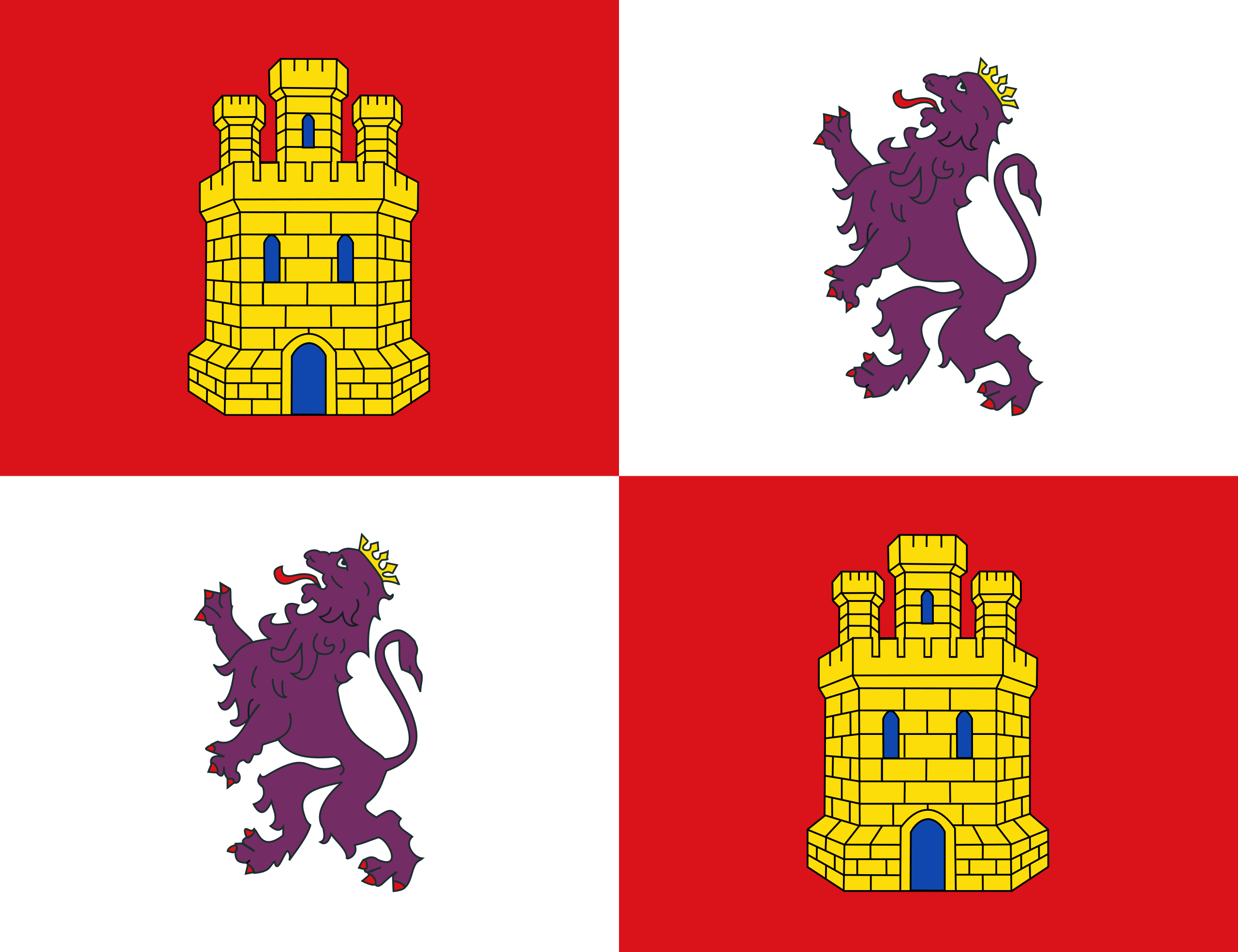 Castilla y León
Castilla y León
 Colleges and Universities in Europe
Colleges and Universities in Europe
 Music
Music